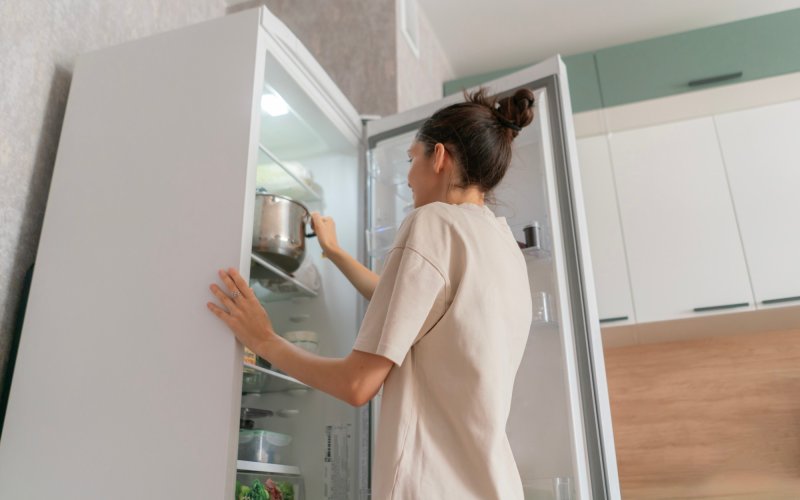There are several reasons why it is recommended to not put hot food in the refrigerator. The first thing that comes to mind is that it increases electricity consumption because the refrigerator has to work harder to cool down. This is important, of course, but more important is the increase in humidity in the refrigerator.
Because food contains water, it evaporates. The rate of evaporation depends on the temperature, so if the temperature in the refrigerator increases, more water will evaporate from all the stored food. Water will also evaporate from the warm food we put in the refrigerator. The increase in humidity in the refrigerator causes it to freeze — moisture will first condense on the cooling part of the refrigerator and then freeze. The frost then acts as an insulator — the refrigerator tries to cool, but because of the frost, the “cold” does not pass from the cooling circuit to the refrigerator. The temperature in the refrigerator will therefore not decrease, which the refrigerator’s control system will interpret as a need for more cooling, leading to increased consumption. To prevent frost from forming in the refrigerator, refrigerators have a “defrost” function — the cooling circuit heats up for a while, which melts the frost and the resulting liquid flows out of the refrigerator. For the same reason, it is not recommended to keep the refrigerator door open for a long time — moist air will enter the refrigerator and may cause frost to form on the cooling parts of the refrigerator.
Another problem, although not directly physical, is that until food cools down completely, bacteria that thrive at temperatures above approximately 5 °C can multiply in it. If we put a large amount of food in the refrigerator, its surface will cool down, but because sauces or thick soups, for example, do not conduct heat well, the temperature inside will drop very slowly. Therefore, the temperature inside sauces will remain higher for a long time, which can lead to an increase in the number of bacteria and thus to food spoilage. The solution is to cool the food outside the refrigerator to room temperature and divide it into smaller portions. Then the whole meal will cool down easily and quickly, and bacteria will not cause it to spoil.
If we put anything hot in the refrigerator, the temperature in the entire refrigerator will rise, causing other foods to heat up and possibly spoil. By putting warm food in the refrigerator, we are not only endangering the food we put in it, but also other foods in the refrigerator.
Want to ask something?
Send us an e-mail with the subject “Physics mysteries” to the address:
We can't wait to tackle your interesting questions!





